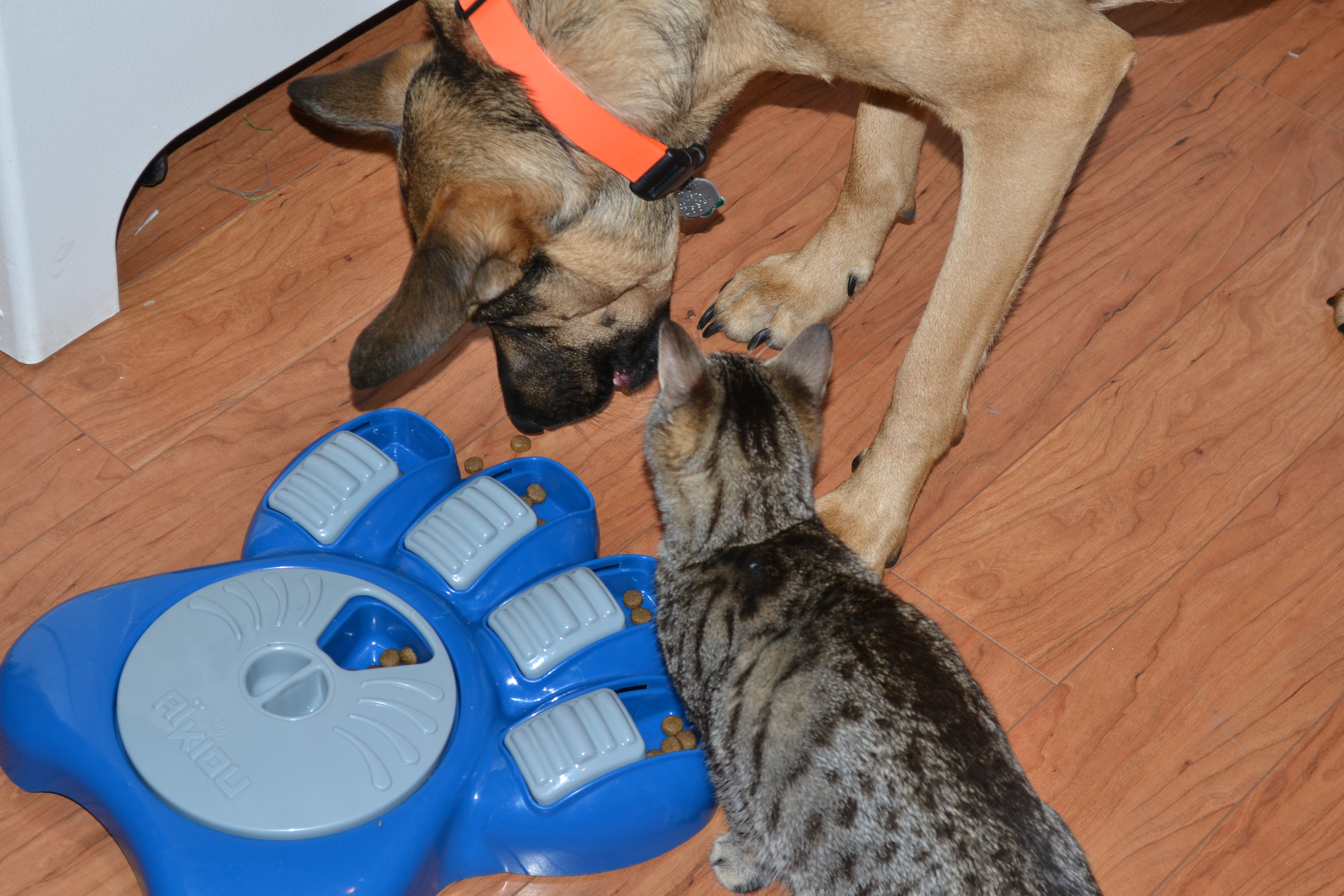This video crossed my path recently and it really caught my eye. I sort of saw my old self, although I never used a pet corrector/convincer. His statements about timing and always remaining calm are things I used to say and do as well. If it was the old me, I would say his timing is good except when he gets distracted by talking. I also would critique that he is keeping too much pressure/tension on the leash. Today, though, I have a different point of view and a much more thorough analysis ready. First, watch the video and then read my analysis below.
My Analysis
This analysis contains both obersvations and alternative ways to treat this issue.
The beginning of the video starts with the dog in a muzzle (which has clearly not been conditioned), in a large harness that attaches in the back, and a prong collar.
The trainer puts the dog on a slip leash at the top of the neck of the reactive dog. The trainer introduces the pet corrector (compressed air) where the dog immediately hunches down to the ground, tucks it’s tail, and pins it’s ears back. The trainer continuously pulls/pulses the leash.
The dog continuously crouches down to the ground. When the other dog comes back out, the dog focuses back on the other dog. It assumes a stalking position and stares intently at the other dog. The trainer interrupts the stalking and staring with the pet corrector. When the dog tries to lunge, the trainer pulls the leash up and uses the pet corrector again. The dog begins to lay down and tries to rub the muzzle off.
They go back and forth approaching the other dog several times. The dog is “corrected” with the pet corrector and leash several times when it stares at the other dog. Each time the dog crouches down to the ground. The dog continues to lie down and roll around. It avoids the other dog until it lunges.
Both dogs facing each other, reactive dog has ears pinned back, tail is low and wags sometimes, legs are awkwardly placed and stiff, and overall the dog is very stiff. The dog on the raised bed is panting, avoiding eye contact with the reactive dog, ears are up and forward or to the side, and tail is wagging.
Outside the trainer has a whip and a pet corrector while walking the dog on the slip leash. The reactive dog approaches another dog’s rear to sniff and wags it’s low tail. Ears are pinned almost the entire time. Leash is also tight almost the entire time. The trainer continues to walk the dog back and forth amongst the other dogs.
How I use to see this training: The dog is being corrected for it’s approach to the other dog – stalking and staring. These interruptions are supposed to break this habit.
How I see it now: I’ve learned that dogs learn by creating assocations with their environmental stimuli. I see that this dog is now associating other dogs with the human using the pet corrector and pulling on the leash. All the trainer is doing is creating negative (bad) associatons with the other dog while teaching the dog what he doesn’t want. The dog has no other skills in it’s history to fall back on and instead just shuts down and refuses to interact with other dogs at all. This type of training relies heavily on punishment and the fear I have is that once the dog goes home and this trainer who is consistent and timely is gone, the punishment will cease and reveal that the behavior issue is still there. The dog has not learned anything other than to suppress it’s urges when the traner is around.
These days, I focus my energy on teaching dog new skills (impulse control, obedience, relaxing, and other appropriate behaviors). These foundation skills give the dog confidence while creating positive (good) associations when working around other dogs. I am creating positive associations because I train with positive reinforcement based techniques such as clicker training and classical conditioning. I try to change the dog’s response from fear to joy.
Most reacitivty is based out of frustration and fear so correcting the behavior really doesn’t address the real issues. The dog may learn how to stop his reactions, but it won’t create new emotions. I work on creating new emotions so that the outward reaction changes as well. And then there are dogs who are in it to kill and give off no warning signals, but that’s a whole different subject.
To read more about where reactivity and leash aggression comes from, read this article: Leash Aggression and Reactivity



